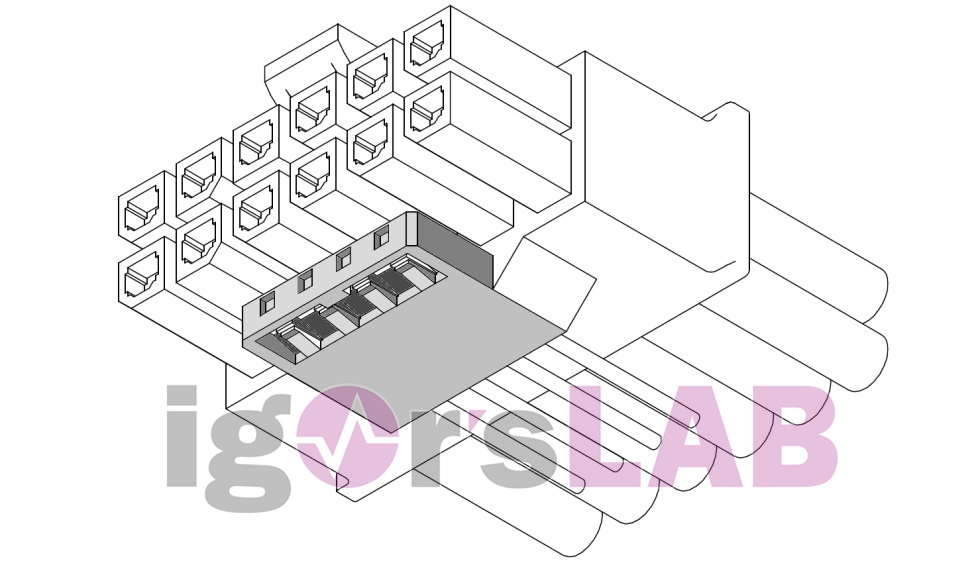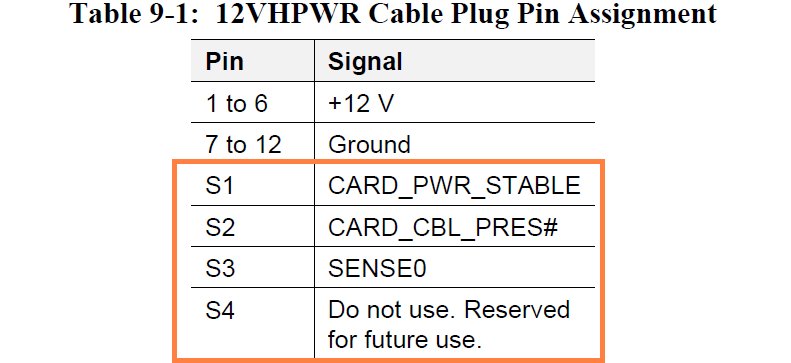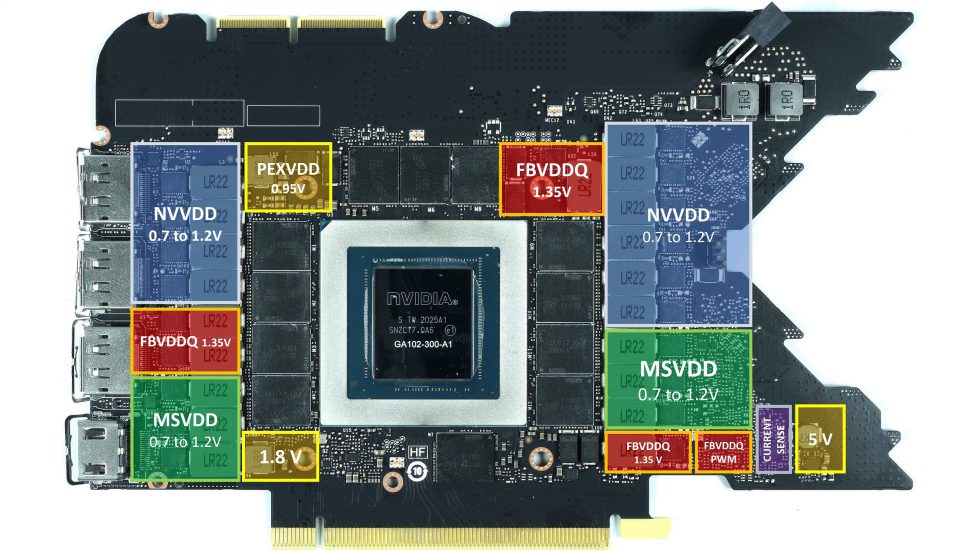Another Update: igorsLab - Is the NVIDIA GeForce RTX 3090 Ti intended as a learning object for their board partners and upcoming Lovelace or does the PCI SIG even put the brakes on?
“Once again: On Hold. This short information from most sources about the GeForce RTX 3090 Ti coincides with the current situation: Date unknown. Of course, it’s no secret that the cards have actually been ready for a long time, but a few details that could be picked up from the various board partners (AIC) are quite spicy. A few weeks ago, in the article ‘Possible problems with the NVIDIA GeForce RTX 3090 Ti – When the circuit design becomes a tight corset’, I had already considered what the reason for the postponement could be. These thoughts do not seem to have been quite so far-fetched after all.
Or to put it another way, it really has something to do with it. We hear from some sources that the GeForce RTX 3090 Ti, which was promoted by NVIDIA at CES as a top of the range product, was probably rather intended as a playground for AIC to prepare for NVIDIA’s upcoming Lovelace chips including an exorbitant power consumption. And, of course, to gain initial experience for the smooth mass production of such a card. Allegedly it’s also confirmed that the TDP recommendation (Default Power Limit) for the GeForce RTX 3090 Ti is ‘only’ 450 watts, while the maximum (Max Power Limit) is positioned around 15% above that (i.e. just below the 520-watt limit).
And yes, now suddenly the 12VHPWR connector for graphics cards with 600, 450, 300 and 150 watts fits into the picture again, which I already wrote about several times. Funnily enough, the 12-pin connector used on the Founders Edition for the power supply matches exactly the pins of the 12VHPWR connector, except that the other four optional pins S1 to S4 (gray in the picture below) are missing. Thus, the already used connector of the FE cards remains downward compatible for now, let’s call it 12VHPWR Ready, but this applies ONLY to the connector! So you will be able to plug the old connector into the new cards with the 12VHPWR, but not vice versa. This is certainly the reason why NVIDIA has registered with the PG136C a slightly modified PCB with the 12VHPWR connector for the GeForce RTX 3090 Ti

Exactly here you have to ask why then companies like EVGA (Kingpin) or Galax (HOF) install two of the new 12VHPWR plugs on the designated top models when one could also manage the power of 600 watts. And of course, we now remind you of Asus, who recently had to downgrade the new ASUS ROG THOR Platinum II from 600 to 450 watts on the 12VHPWR connector again. NVIDIA (and Asus) have obviously done the math without the PCI SIG, the standardization organization that is also behind PCI Express 5.0. However, I still have to explain that briefly.
The 12 power supply pins, six of which are for the 12 volts and ground each, remain completely identical in shape and pinout to the normal 12-pin connector of the FE cards. However, the 4 smaller ports on the bottom (highlighted in gray in the picture above) are quite tricky. In fact, with the introduction of the 12VHPWR power supply connections, four optional sideband signals are added, three of which are already temporarily assigned to defined features.

The two optional sideband signals, SENSE0 and SENSE1 (S3 and S4 in the table), provide a mechanism for the add-in card to sense the limits of the connector’s initial allowable power and the connector’s maximum allowable power for the cable and power supply. However, currently only SENSE0 is (temporarily) named, while SENSE1 is still completely open. SENSE0 currently defines (only temporarily) the maximum power limit, i.e. the maximum power supported by this cable. If the 4 contacts were simply omitted, any 12-pin connector would also fit, but only up to 450 watts and without the temporary ground pin, which is supposed to define the 600 watts for S3.
Upon inquiry, an interesting picture emerges: The new standard still doesn’t seem to be finalized, so that in the worst case, a complete redefinition of the assignment and pin coding could take place (which is unlikely, but not impossible). But then a ground connection of the S3 already introduced now would lead to technical problems. However, it is also a fact that the up to almost 520 watts currently can’t even be supplied according to standards with only one connector, if it isn’t divided between connector and motherboard slot. Here I go back to an older article where I already explained this and summarize it briefly:

We see a breakdown of the GPU supply voltage into NVVDD (blue) and MSVDD (green), as well as that for the memory in the form of FBVDDQ (red). The generation of the other partial voltages is negligible here for the time being because of their share in the TBP, although not completely uninteresting. If you know how the phases of the voltage converters work, then you also know that the majority is connected to the external PCIe port (Aux). But that’s not all. A certain part also hangs on the PCIe motherboard slot (PEG) and at the latter now the problem starts.
The PEG has already fully exhausted its limit of 5.5 amps (thus 66 watts) on the 12 volt rail in many GeForce RTX 3090s in the 350 watt window and could only be loaded even further by means of a (blatant) norm overrun! Therefore, board partners are forced to modify the existing designs of the GeForce RTX 3090 and shift the load more towards the 12VHPWR connector. But as always, the devil is already in the details, because the complete power supply of such a card is a very fragile and carefully balanced construction. However, if you believe the board partners, this part has been successfully mastered already.
I don’t want to write about the capacitors underneath the GPU and along all the tracks up to the PWM nodes of the voltage converters, because this topic can’t be dismissed either. If 350 or even 450 watts already cause huge stability problems (and that could only be fixed by a driver), what happens at 520 watts? I don’t really want to think about that. But if such cards really make it to the market, I’ll be happy to be convinced of the opposite (or convince myself).
Incidentally, the memory with 21 Gbps is also a shaky candidate, whose stability could be argued about despite the backdrill method, even if NVIDIA’s base design kit allows it and the manufacturers stick to it. Keyword signal integrity. Theory and practice. Thus, the GeForce RTX 3090 Ti not only shows itself as a top model, but also as an object lesson for the board partners and for what is still to come in 2022: NVIDIA’s Lovelace.”